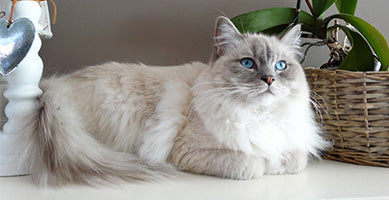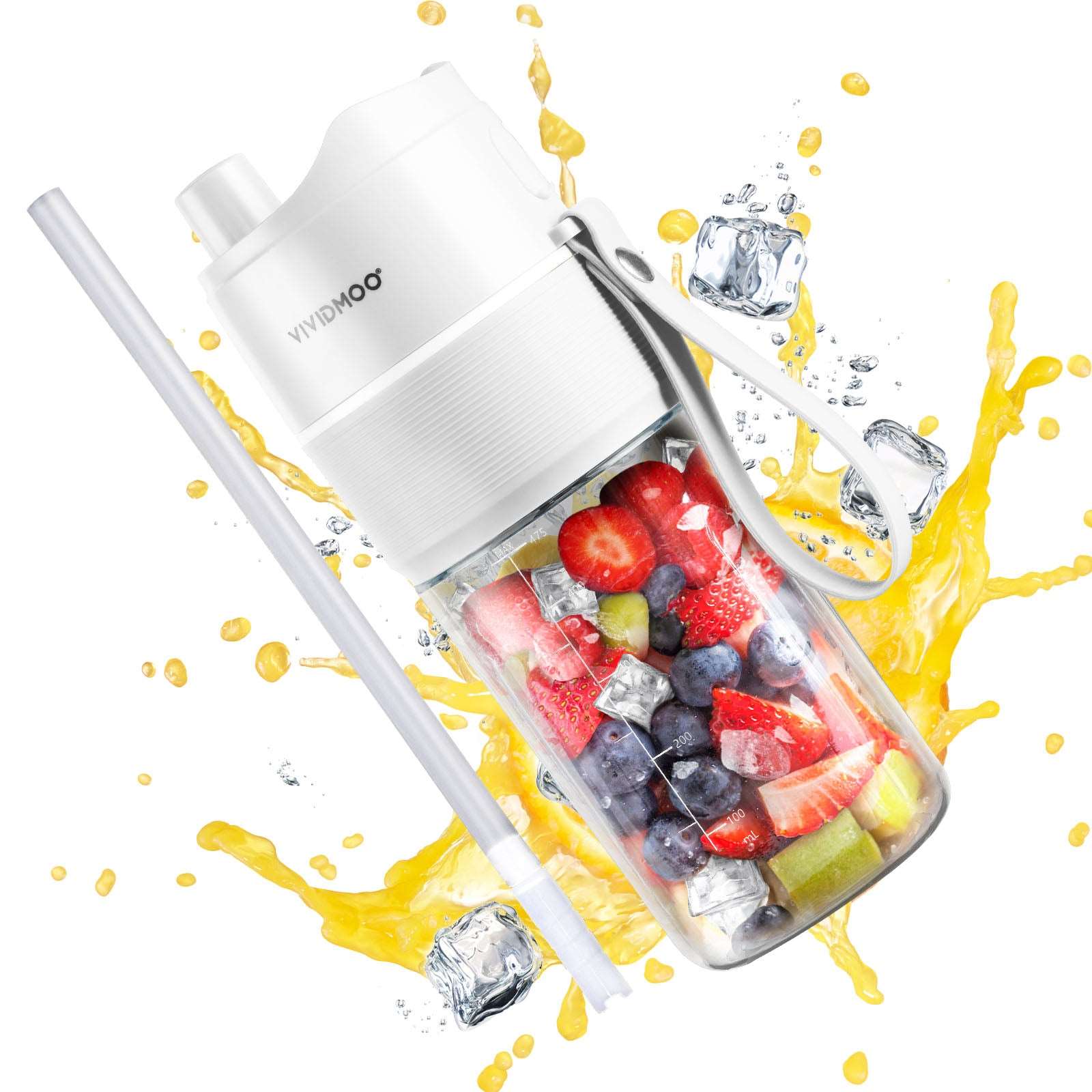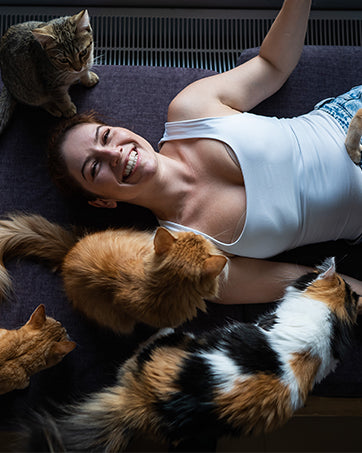Jessica W. Kelvin - Mar.05.2024
Why Do Cats Eat Grass?
7 Insights into Feline Behavior

Written by Vinh Trinh| DVM|1.18.24
How Often Should I Change Cat Litter?
Est. read time: 3 min.
FFor cat owners, maintaining a clean and odor-free living space for their furry friends is a constant challenge. One key aspect of this is managing the cat litter box, a task that can be as demanding as it is necessary. The frequency of changing cat litter can greatly impact both the health and comfort of your cat, as well as the cleanliness of your home. Enter the game-changing solution: Vividmoo's intelligent automatic cleaning cat litter box. Designed to simplify pet care, this innovative product promises to revolutionize how we think about litter box maintenance.
Understanding Cat Litter Basics
Cat litter comes in various forms, each with its advantages and specific maintenance needs. The most common types include clumping, non-clumping, silica gel, and biodegradable varieties. Clumping litter, for example, is popular for its ease of scooping, while silica gel litter is praised for its odor control capabilities. The choice of litter not only affects your cat's preference but also determines how often the litter box needs attention. Several factors influence this frequency, including your cat's age, the number of cats using the box, and the type of litter chosen. Understanding these basics is essential for any cat owner looking to maintain a healthy and hygienic environment for their pets.
General Recommendations on Changing Cat Litter
As a general guideline, traditional cat litter boxes should be scooped daily and the litter changed completely at least once a week. However, this can vary based on the litter type and the cat's usage. It's important to watch for signs that the litter needs changing more frequently, such as noticeable odors, excessive clumping, or dampness. Regular cleaning not only keeps the box fresh but also encourages your cat to use it, reducing the likelihood of accidents around the house.

Benefits of Using an Automatic Cleaning Litter Box
Vividmoo's intelligent automatic cleaning cat litter box elevates the concept of a clean litter environment to new heights. By automating the cleaning process, it ensures that the litter box is always fresh and inviting for your cat. This technology is not just about convenience; it's also about creating a healthier living space for both pets and their owners. Automatic cleaning minimizes the risk of bacteria and odor build-up, significantly reducing the time and effort involved in litter box maintenance. For busy pet owners, the advantages of switching to an intelligent cleaning system are clear.

© David J. Stang / CC-BY-SA-4.0
Also known as a butterfly palm, the bold areca palm does best in bright, indirect light. One tip? You may want to place your butterfly palm in a tall, heavy pot to keep your cat from digging in it or, ahem, using it as a litter box.
Optimizing Litter Box Maintenance with Vividmoo
Integrating Vividmoo's intelligent litter box into your daily routine can drastically reduce the hassles of pet care. This state-of-the-art litter box is compatible with various types of cat litter, allowing you to choose the best option for your pet. Moreover, its settings can be adjusted to accommodate the unique needs of your cat, whether it's for multiple cats or adjusting the cleaning frequency. The result is a more personalized and efficient approach to litter box maintenance, ensuring your cat enjoys a clean and comfortable environment at all times.

© David J. Stang / CC-BY-SA-4.0
Another of the houseplants safe for cats on our list could also be considered a succulent safe for cats. This plant is a gorgeous choice for those who want low-maintenance plants that thrive in warm weather with filtered light—as long as you keep the soil moist. Hardy baby tears can also be used to cover soil of other houseplants in which your pets might be fond of digging.
Conclusion
Regularly changing your cat's litter is crucial for their health and happiness, as well as the cleanliness of your home. With Vividmoo's intelligent automatic cleaning cat litter box, managing this task has never been easier. By embracing this innovative solution, cat owners can ensure their pets are cared for in the best possible way, giving them more time to enjoy the joys of pet ownership without the usual upkeep. Consider upgrading to Vividmoo's intelligent litter box for a healthier, hassle-free pet care experience.

Cats:Theobromine Toxic Consumption
Most Cats: 1-10 lbs(0.45-4.6 kg), Large Cats11-25 lbs(5-11.4 kg)
Cacao Beans: Most Cats> 0.05 oz, Large Cats> 0.5 0z
Unsweetened Baking Chocolate: Most Cats> 0.2 oz, Large Cats>2 0z
Dark Chocolate: Most Cats> 0.5 0z, Large Cats>7 oz
Milk Chocolate: Most Cats>1.5 0z, Large Cats>16.5 0Z
White Chocolate: Most Cats>360 oz, Large Cats>4000 0z
Cocoa Powder: Most Cats> 01 0z, Large Cats>10z
Cocoa Bean Mulch: Most Cats>0.1 0z, Large Cats>1 0z

Showing making procedure is a good way to guarantee product quality
Stress Relief
Eating grass can also serve as a form of stress relief for cats, providing a calming activity that distracts from anxiety or boredom.
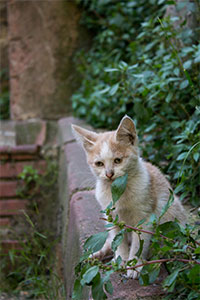
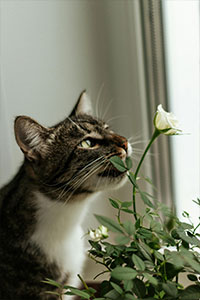
Get customer attention by clean visual and video
Instinctual Actions
Grass eating is an instinctual behavior that may stem from a cat's need to seek out alternative food sources or to induce vomiting to clear their stomachs of indigestible materials.
Article credit: Heidi Cohen (https://heidicohen.com/use-blog-to-sell/)
Digestive Aid
Grass acts as a natural laxative, helping cats pass hairballs or other indigestible items through their digestive tract more easily.
Elimination of Parasites
It's also theorized that grass eating may help cats eliminate intestinal parasites, although this benefit is more anecdotal than scientifically proven.
How to Safely Introduce Grass to Your Cat
Suitable Types of Grass
Certain types of grass are more beneficial and safer for cats, including wheatgrass, which is often sold as "cat grass."
Growing Your Own Cat
Grass
For the safety and health of your cat, consider growing your own cat grass at home. It's a simple and effective way to ensure they're getting a safe product.
Alternative Behaviors and Solutions
Dietary Supplements
If your cat shows an excessive interest in eating grass, it might indicate a dietary deficiency. Consult with a veterinarian about supplementing your cat's diet.
Behavioral Enrichment
Providing toys, climbing structures, and engaging activities can reduce your cat's inclination to eat grass by offering alternative forms of stimulation.
Why Do Cats Eat Grass?
Exploring the curiosity behind this behavior reveals a complex blend of nutritional, psychological, and instinctual factors. Understanding these can help cat owners provide better care and enrichment for their feline friends.
Owner Experiences and Advice
Personal Anecdotes
Many cat owners have observed their pets eating grass and have noted the benefits or concerns that came with it. Sharing these experiences can offer valuable insights for other pet owners.
Expert Recommendations
Veterinarians and animal behaviorists can provide professional advice on managing grass-eating behavior, ensuring it remains a safe and positive experience for your cat.
FAQs
Cats should not eat chocolate ice cream; not only is chocolate toxic to cats, but ice cream often contains toxic ingredient propylene glycol. Ingesting propylene glycol can lead to anemia in cats.
Say it at the end
Understanding why cats eat grass sheds light on their complex behaviors and the natural instincts that drive them. By providing safe, suitable grass and paying attention to the underlying reasons for this behavior, cat owners can ensure their feline companions lead happy, healthy lives.



